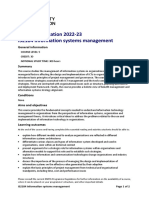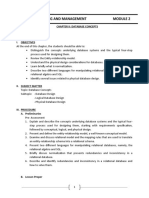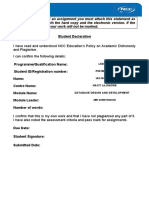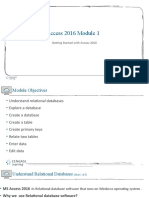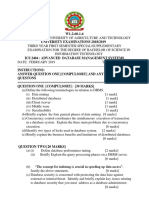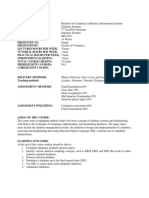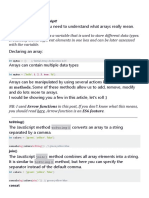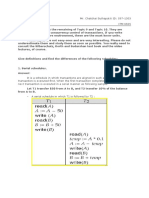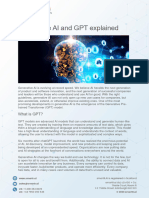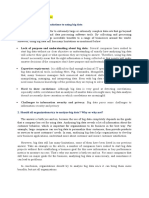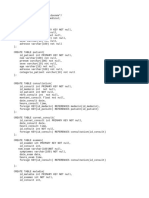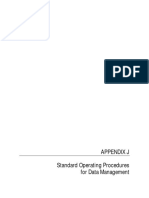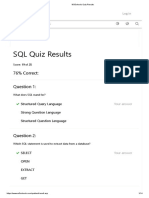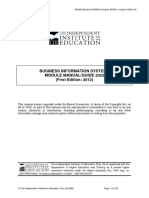100% found this document useful (1 vote)
429 views4 pagesTheory of Database Management Systems
This document provides information about a database management systems course, including its goals, objectives, syllabus, assessments, and expectations. The course examines fundamental concepts and theory of database modeling and design, database management system languages and facilities, and techniques for implementing relational database systems. Students will learn how to design databases conceptually and logically, use SQL to create and query databases, and complete a database project. The course is typically offered online in spring, summer, and fall terms.
Uploaded by
Miguel LoureiroCopyright
© © All Rights Reserved
We take content rights seriously. If you suspect this is your content, claim it here.
Available Formats
Download as DOCX, PDF, TXT or read online on Scribd
100% found this document useful (1 vote)
429 views4 pagesTheory of Database Management Systems
This document provides information about a database management systems course, including its goals, objectives, syllabus, assessments, and expectations. The course examines fundamental concepts and theory of database modeling and design, database management system languages and facilities, and techniques for implementing relational database systems. Students will learn how to design databases conceptually and logically, use SQL to create and query databases, and complete a database project. The course is typically offered online in spring, summer, and fall terms.
Uploaded by
Miguel LoureiroCopyright
© © All Rights Reserved
We take content rights seriously. If you suspect this is your content, claim it here.
Available Formats
Download as DOCX, PDF, TXT or read online on Scribd
/ 4

